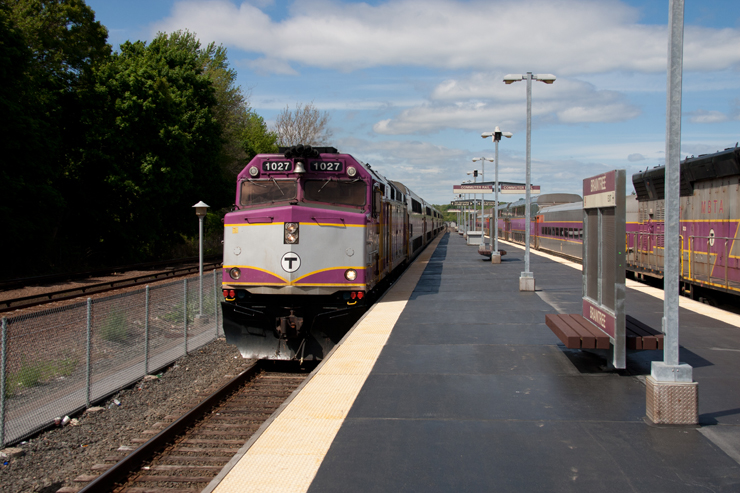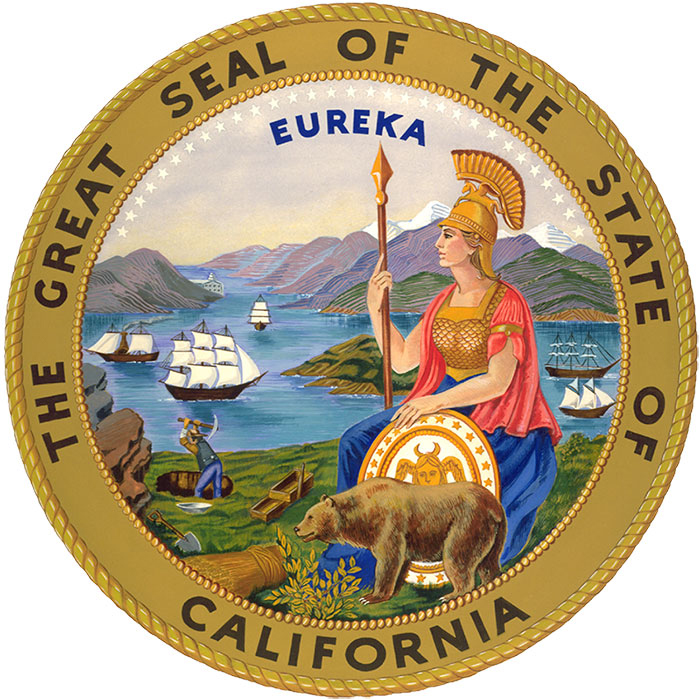BOSTON — Massachusetts Gov. Charlie Baker has committed more than $1 billion in state bond funding for the South Coast Rail project, clearing a major financial hurdle in the effort to restore commuter rail service from Boston to the southeastern portion of the state.
Phase One of the project will extending the Massachusetts Bay Transportation Authority’s existing Middlebourough/Lakeville line to East Taunton, Mass., then reach Fall River and New Bedford, Mass., Commonwealth Magazine reports. South Coast Today says the project will require reconstruction of 17.3 miles of track on the New Bedford main line and 11.7 miles of the Fall River secondary, upgrading 7.1 miles of existing Middlesborough secondary track, and building six new stations, and building two new layover facilities. Service is projected to begin in 2023.
The state’s transportation secretary, Stephanie Pollack, reported another hurdle for the project has been cleared, as the U.S. Army Corps of Engineers has approved the final federal permit needed for the project. “It’s full speed ahead on South Coast Rail,” she said.
The project has been discussed for some 25 years, according to Commonwealth Magazine.















Charles Landey is correct: the line south out of Stoughton runs right through a large swamp. These days we all know what that means. But the line operated through the swamp for many decades and I don’t recall at the time hearing the frogs croaking their disapproval or the marsh birds tweeting theirs. There is also a state mandate that if service is restored on this line it must be electric. That will add a huge amount to the costs. They would run wire from Canton Jct on the NEC down 3 miles to Stoughton, and then on to Taunton and on to the New Bedford (Noo Beffa) branch, and on to the Fall River (Fall Rivah) line.
North Easton was the first station south of Stoughton and I heard there was a beautiful stone station there, so I went to look at it, circa-1963. The tracks were still intact then. That station was, and is, in some sort of community service. In the 1950s a classmate of mine at school in Boston, a very cute girl, lived in New Bedford and rode the trains every day (mostly via Stoughton).
John, it’s North Attleborough (spelled only one way). It’s Attleboro (spelled only one way). There is at least one switch hitter, which is Foxboro(ugh). I can’t tell you how the others are spelled or if they switch hit: Middleboro, Marlboro, Boxborough, Westborough, Southborough and Northborough,
John since you can spell Middleboro(ugh) did you know it’s the second largest (by area) city or town in Massachusetts? Nearby Plymouth is first. But Gosnold (population 90) sprawls over the longest dimension from one point in the town to the furthest. (The Bay State a/k/a Old Colony State is just plain weird.)
Anyway your post, John, makes Robert McGuire’s point for him. How can an agency already stretched thin come up with the billions to first build then to electrify a BRANCH line? MBTA has never owned a single electric motor. It runs diesels under Amtrak wire from Boston to Theodore Francis Green State Airport (PVD) south of Providence.
Question for you John – When the Old Colony main was rebuilt through Quincy was enough headroom left for electrification?
Here’s a bit more operational info from the Commonwealth Magazine: “…Once completed, the trip between New Bedford and South Station on the South Coast line is expected to take at least 90 minutes. There will only be three peak AM and PM trips each day, with a total of 13 total trips. Ridership projections have been iffy, with estimates of 1,600 daily riders in 2030 and 3,900 in 2040…”
Also as this article implies, there is a phase 2 investment under discussion to serve Fall River and New Bedford. Here’s another excerpt form Commonwealth Magazine: “…The Middleborough-focused South Coast Rail service is officially described as Phase 1, with Phase 2 to be an all-electric service extending the Stoughton Line with an estimated total project cost of $3.2 billion. Pollack gave no update on Phase 2 during her presentation Monday; Phase 2 had been scheduled to be completed by 2030…”
Lastly, it’s “Middleborough”….
Ron, just to the west of where you speak, the main line of NEC also runs through a swamp. This is in the southern part of Sharon, heading toward the Foxbor(ough) town line and the former site of the East Foxboro(ough) MBTA stop, which isn’t there any more. If we didn’t build in f/k/a swamps now known as wetlands we’d have no place to live.
It seems that Sharon, Foxboro(ough) Stoughton etc. are some sort of high ground swamp on the ridge line between the Neponset River basin which flows north toward Quincy/ Boston, and whatever rivers flow south toward Tau’n and Fall Rivah.
The original proposal for this service several years ago was to restore track on the right-of-way south of Stoughton (current end of track) directly south to Taunton. But there were many hurdles along that route, so now they will go east from the Taunton area and go over to Middleboro, which is on the Boston- Braintree- Brockton – Cape Cod line. But service via Stoughton, which is much more direct, is still on the back-burner for consideration in the distant future. (That line from Stoughton southward was removed circa- 1960s.)
Charles:
Caught up on your many posts in recent days, and the constructive critiques by others. I find myself laughing out loud, often. It’s not a criticism, rather an enjoyable view from the peanut gallery I reside in.
Today’s entry leaves me wondering “..(sic) besides the indirectness of the remaining route”, you are positing “Why?” for this route’s establishment I surmise. Am I correct?
Taunton both was an is the rail center of southeastern Massachusetts, lying between the New Haven’s Old Colony district generally to the east, and the Boston to Providence main to its west.
The proposal is to access Taunton (and beyond) via the former Old Colony district – Boston to Quincy to Braintree to Brockton to Middleboro to Taunton.
Taunton both was and is connected to NEC (Boston to Providence). In times gone by there were three routes connecting Taunton to NEC. One remains (the least direct). That one remaining line, indirect as it is, functions as a link in the roundabout freight route from Selkirk (New York) to SE Massachusetts, the Massachusetts south coast and Cape Cod.
Bristol County (Attleboro, Taunton, Fall River, New Bedford) is generally considered a downmarket area compared to other, wealthier parts of the Commonwealth. Portuguese is widely spoken, with Brazilian immigrants now joining earlier families from Portugal and the Cape Verde islands. There is also a microscopic Bristol County in Rhode Island (three towns), ceded from the Bay State to the Ocean State many years ago.
Doug,
I thought island ferries out of New Bedford went away generations ago, as the ferry voyage is substantially longer than from Woods Hole (the other side of the Sagamore Bridge you mention).
Assuming the New Bedford trains serve the ferry terminal, you could tell me how many seats (transfers, etc.) it would take a family to get from home to the train to the ferry to their place of domicile on the Vineyard or Nantucket. Meanwhile schlepping their luggage at each transfer because they don’t have their car with them.
Can it be done? Yes. I met an elderly couple on the Frisian Islands (Netherlands) whose journey home from vacation would be be bus – ferry – bus and a couple of trains, carrying their luggage. Years later, at the Exeter (England) train station, I met an elderly couple heading for a vacation in Norfolk, herding three dogs. Among other transfers, they’d need to cross all the way across London from Paddington Station to Liverpool Street Station.
Ironically, these travelers (Netherlands and England) were pretty much going the same journeys I myself was taking when I met them. I too was going from Exeter to East Anglia, with my luggage but without three dogs. I never rented a car in either country, taking trains and walking from the train station to the hotels (sometimes a couple of miles). So yes it can be done.
It’s not just a Boston bound commuter rail idea. Imagine city residents taking a weekend trip via the train from Boston to New Bedford, and then the ferry from New Bedford to the Vineyard or Nantucket (the latter is starting up this summer). Similar to the Cape Flyer to Hyannis but not a once a Friday specialized trip, it’ll have more frequent service, and a shorter train trip to a ferry. Beats driving over the Sagamore Bridge on a summer Friday eve in my book.
This is just one more thing that the MBTA neither can afford nor operate as they are so over extended. Just another reason to waste more taxpayer dollars for no good reason.
Let’s look at MBTA’s record in recent decades:
(1) Massive upgrading of the Worcester Line (ex-New York Central) from token rush hour service to a full frequency corridor.
(2) Addition of service to the Fairmount branch in Dorchester (which previously had been used only as a detour for the Providence trains and Amtrak while the NEC main line through Roxbury was being reconstructed).
(3) Resurrection of the Old Colony trains – a district thought to be dead, buried and forgotten.
KIP – Ron Salter’s post answers your question about my post. Ron’s post is that the route not chosen via NEC to Stoughton to Taunton is more direct (and I might add also bring in Back Bay Station – the Old Colony trains don’t call at Back Bay while the NEC trains do).
FWIW I’ve heard that restoring the NEC – Canton Junction – Stoughton – Taunton route runs into wetland issues, but I’m not too sure of my source on that one.
FWIW Taunton, Massachusetts, is pronounced tau-‘n. (Canton and Stoughton similar). When I was in England I asked how Taunton (Somerset County England) is pronounced over there – it’s pronounced Taunton.